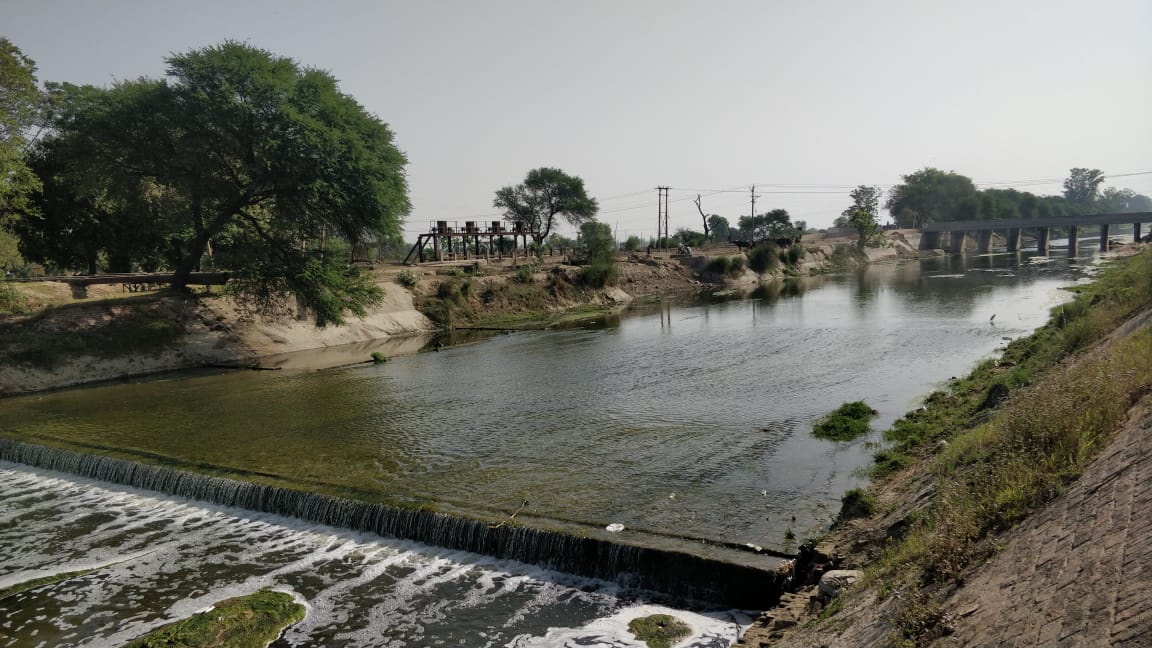Chautang River on:
[Wikipedia]
[Google]
[Amazon]
The Chautang is a seasonal river, originating in the Sivalik Hills, in the Indian state of Haryana. The Chautang River is a tributary of the Sarsuti river which in turn is a tributary of the Ghaggar river.AmbalaOnline - Rrvers of Ambala
/ref>

Sarasvati-Sindhu civilization and Sarasvati River
{{Haryana Rivers of Himachal Pradesh Rivers of Haryana Rivers of Punjab, India Rigvedic rivers Indus basin International rivers of Asia Sarasvati River Rivers of India
/ref>
Origin and route
The Chautang river is a seasonal river in the state of Haryana, India. It is theorized by some to be a remnant of the ancient riverDrishadvati
The Drishadvati river (IAST:, "She with many stones") is a river hypothesized by Indologists to identify the route of the Vedic river Saraswati and the state of ''Brahmavarta''. According to ''Manusmriti'', the ''Brahmavarta'', where the Rishis c ...
. It joins the Ghaggar-Hakra River east of Suratgarh in Rajasthan. According to McIntosh, this river was one of the main contributors to this river system until the Yamuna changed its course. However, according to Giosan, the Chautang is a rain-fed river, and the Yamuna changed its course towards east some 50,000 to 10,000 years ago, and didn't pour any water into it for the last 10,000 years. Hansi Branch of Western Yamuna Canal is palaeochannel of this river.
Firuz Tughluq( A.D. 1351-1388) didn't do what his predecessors had done. He reduced land revenue, exempted the peasants of several taxes and providing them many facilities. He took out a canal from the Yamuna which entered the district at Anta (tahsil Safidon) and thence flowing through the present Jind District from east to west in the line of the old Chautang river passing the town of Safidon, Dhatrath and Jind and reached Hisar. This branch was built in the paleochannel of seasonal Chautang river which is a relict of Drishadvati river flowing from Kaithal to Hisar district, passing through the towns of Jind, Hansi
Hansi, is a city and municipal council in Hisar district in the Indian state of Haryana. It appears that at one time Hansi was larger, more prosperous and more important than Hisar. The town has several important buildings of archeological import ...
, Hisar, largest Indus Valley civilization
The Indus Valley Civilisation (IVC), also known as the Indus Civilisation was a Bronze Age civilisation in the northwestern regions of South Asia, lasting from 3300 BCE to 1300 BCE, and in its mature form 2600 BCE to 1900&n ...
site of Rakhigarhi and ancient Agroha Mound
Agroha, locally known as ''Ther'', is an archaeological site located in Agroha, in the Hisar district of India.
Location
The mounds are located about 1.5 km from the town of Agroha, 20 km from Hisar city and 190 km from Ne ...
. Drishadvati river itself was a tributary of the Ghaggar-Hakra River.

See also
* Western Yamuna Canal, branches off Yamuna river * Markanda river, a tributary of Sarsuti * Dangri, a tributary of Sarsuti * Sarsuti, a tributary of Ghaggar-Hakra River * Kaushalya river, a tributary of Ghaggar-Hakra River *Sutlej
The Sutlej or Satluj River () is the longest of the five rivers that flow through the historic crossroads region of Punjab in northern India and Pakistan. The Sutlej River is also known as ''Satadru''. It is the easternmost tributary of the Ind ...
, a tributary of Indus
The Indus ( ) is a transboundary river of Asia and a trans-Himalayan river of South and Central Asia. The river rises in mountain springs northeast of Mount Kailash in Western Tibet, flows northwest through the disputed region of Kashmir, ...
* Ganges
* Indus
The Indus ( ) is a transboundary river of Asia and a trans-Himalayan river of South and Central Asia. The river rises in mountain springs northeast of Mount Kailash in Western Tibet, flows northwest through the disputed region of Kashmir, ...
References
External links
Sarasvati-Sindhu civilization and Sarasvati River
{{Haryana Rivers of Himachal Pradesh Rivers of Haryana Rivers of Punjab, India Rigvedic rivers Indus basin International rivers of Asia Sarasvati River Rivers of India